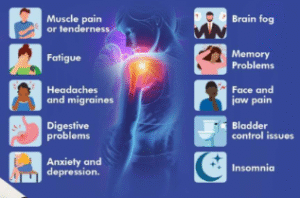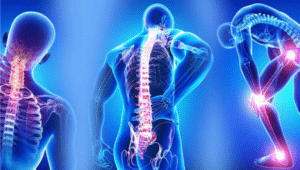Navigating the Complex World of Fibromyalgia Pain Management
Fibromyalgia is a long-term condition characterized by chronic widespread pain that often appears alongside fatigue, sleep issues, and cognitive dysfunction. One of the most debilitating aspects of the disorder is persistent pain, which can affect muscles, joints, and even the skin. It is not only physically taxing but emotionally draining, often impacting one’s quality of life and daily functioning.
The complexity of fibromyalgia pain lies in its source. It originates from abnormal pain processing in the brain and spinal cord, rather than tissue damage or inflammation. This central sensitization results in heightened pain perception even in response to mild stimuli. Because of this, the treatment for fibromyalgia pain must take a multi-pronged approach, targeting both physical and neurological systems.
Conventional Medical Treatments for Fibromyalgia Pain
Managing fibromyalgia pain with pharmaceuticals is often the starting point for many patients. While medications do not offer a cure, they can significantly ease discomfort and improve function.
Analgesics
Simple over-the-counter pain relievers like acetaminophen may offer mild relief. However, nonsteroidal anti-inflammatory drugs are generally less effective because inflammation is not the root cause of fibromyalgia pain. Stronger analgesics are typically avoided due to the risk of dependency.
Antidepressants
Drugs such as duloxetine and amitriptyline are commonly used not only for their mood-enhancing effects but also for their pain-modulating properties. They help alter neurotransmitter levels, which can lower pain perception.
Anticonvulsants
Medications like pregabalin and gabapentin are among the most prescribed options for nerve-related fibromyalgia pain. They work by reducing nerve signal transmission, thereby easing hypersensitivity.
Muscle Relaxants and Sleep Aids
Some patients benefit from medications that promote better sleep and reduce muscle tension. Quality rest is vital for muscle recovery and reducing the intensity of pain.
Physical Therapy and Movement-Based Approaches
A cornerstone in fibromyalgia pain treatment is movement therapy. Contrary to instinct, staying still or inactive can increase stiffness and worsen pain over time.
Customized Physical Therapy
Professional physical therapists guide patients through low-impact exercises tailored to their pain thresholds. These routines improve muscle tone, circulation, and joint mobility, helping to ease pain over time.
Stretching and Range of Motion Exercises
Daily stretching exercises can prevent muscle tightness, particularly in the neck, back, and hips. These exercises also improve posture, which can relieve pressure from certain pain points.
Aquatic Therapy
Water-based therapy provides a low-resistance, low-impact environment that supports the body while promoting movement. This can be especially beneficial during flare–ups.
Holistic and Alternative Therapies for Pain Reduction
The mind and body are closely linked in fibromyalgia, and non-medical treatments can offer significant relief when incorporated into a comprehensive care plan.
Acupuncture
This traditional Chinese practice targets specific points on the body to improve energy flow and stimulate natural pain relief mechanisms. Some people experience immediate benefits in muscle relaxation and pain reduction.
Massage Therapy
Gentle massage helps release tight muscles, promote blood flow, and reduce stress-related tension. Specialized fibromyalgia massage techniques are designed to avoid over-stimulating pain-sensitive areas.
Chiropractic Adjustments
Spinal misalignments can contribute to back and neck pain. Chiropractic care may ease pressure on nerves and improve spinal function, reducing pain for some individuals.
Mind-Body Practices
Mindfulness meditation, deep breathing exercises, and progressive muscle relaxation techniques teach individuals how to refocus attention away from pain, lower stress levels, and reset the nervous system.
Lifestyle Adjustments for Long-Term Pain Control
Pain management goes beyond medication and therapy. Lifestyle changes play a pivotal role in improving how one experiences and copes with fibromyalgia pain.
Structured Sleep Routine
Poor sleep intensifies fibromyalgia pain. Establishing consistent sleep and wake times, minimizing screen time before bed, and creating a calming bedtime ritual can enhance sleep quality and, by extension, reduce pain levels.
Balanced Nutrition
Anti-inflammatory foods, such as leafy greens, fatty fish, nuts, and berries, may contribute to reduced pain sensitivity. Avoiding sugar, processed foods, and excess caffeine can also prevent symptom flares.
Hydration and Supplementation
Staying hydrated helps keep muscles and joints flexible. Some people explore supplements like magnesium, vitamin D, and omega-3 fatty acids, which have been linked to reduced pain in some cases.
Stress Reduction Techniques
Mental stress is known to heighten pain perception. Regular use of stress-relief techniques such as journaling, listening to calming music, or engaging in creative hobbies can serve as natural pain buffers.
Assistive Tools and Technology
Modern tools and adaptive devices can reduce physical strain, preventing pain exacerbation during daily tasks.
- Ergonomic furniture and supportive mattresses
- Voice-activated or hands-free devices
- Hot and cold packs for localized pain relief
- Foam rollers and handheld massagers
- Mobile apps for pain tracking and meditation guidance
These aids can significantly reduce day-to-day discomfort and help monitor patterns in pain levels.
Integrative Medical Programs
Comprehensive fibromyalgia clinics or integrative medical programs offer multidisciplinary care involving rheumatologists, neurologists, psychologists, dietitians, and physical therapists. This team-based model offers the advantage of tailoring all aspects of care under a unified strategy, leading to better long-term outcomes.
FAQs About Treatment for Fibromyalgia Pain
1. Is fibromyalgia pain constant or does it come and go?
It varies. Some people experience ongoing pain, while others report intermittent flare–ups that are influenced by stress, activity, or weather.
2. Can exercise help reduce fibromyalgia pain?
Yes, when approached gently and consistently. Low-impact exercises improve muscle health, circulation, and mood, which can all help reduce pain.
3. Do medications work for everyone with fibromyalgia pain?
No, responses to medications vary. Some people experience significant relief, while others may need to rely more on lifestyle or holistic therapies.
4. Can natural treatments be used alone?
For some, especially those with milder symptoms, natural approaches can be enough. Others benefit from combining these with traditional medical care.
5. How long does it take to see improvement?
It depends on the individual and the combination of treatments. Some people see results within weeks, while for others it may take months of consistent management.
6. Is it possible to live pain-free with fibromyalgia?
While complete pain elimination is rare, many people achieve substantial relief and live fulfilling lives with the right treatment mix.
Conclusion
Fibromyalgia pain may be chronic, but it is not unmanageable. By taking a holistic, proactive, and adaptive approach, individuals can gain control over their symptoms and reclaim comfort in daily living. From medication to mindfulness, each step taken toward a tailored treatment plan can significantly shift the pain narrative. The journey may not be linear, but with persistence, education, and support, long-term relief is within reach.



